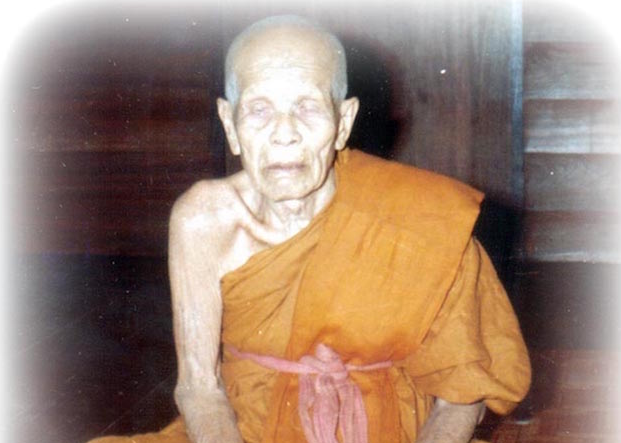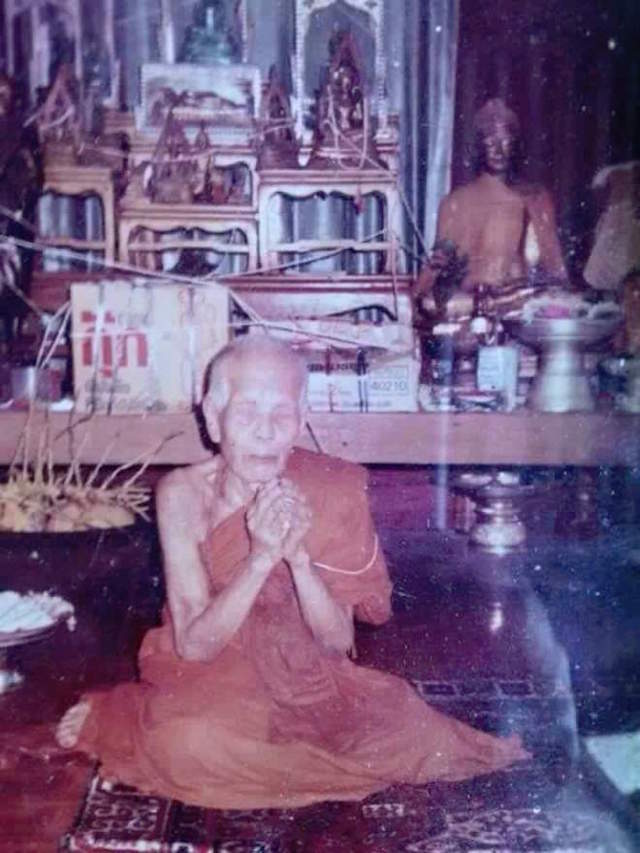Luang Phu Ban, Grand Master Monk of Wat Mae Ya Thai Buddhist Temple
Luang Phu Ban was ordained as a Samanera Novice Monk at the age of 15 in the year 2450 BE at Wat Sandonrom, with Luang Phu Kroo Ba Ma serving as his Upachaya Ordaining Officer. After some time, Luang Phu Ban relocated to Wat Pradtuli, now known as Wat Sangkaram.
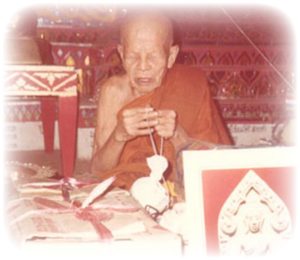
As time went on, Luang Phu Ban’s relatives began pressuring him to disrobe to assist with farming, as they were struggling and needed help. Despite their pleas, Luang Phu Ban chose to remain ordained and moved to Wat Chai Monkgol to avoid the temptation to disrobe.
During this period, the esteemed Kroo Ba Srivichai arrived at Wat Chai Mongkol to oversee the construction of a Vihara Shrine and a Chedi relic Stupa. Luang Phu Ban had the opportunity to assist Kroo Ba Srivichai with these projects until he reached the age of 22, at which point he was fully ordained as a Bhikkhu, promoted from his status as a Samanera Novice Monk.
Coming from a very poor family, Luang Phu Ban could not afford to be fully ordained until the Monk Jao Rachapatigawongs offered to act as his Guarantor, covering the costs of his robes and the Ordination Ceremony.
This time, Kroo Ba Gandta of Wat Pratat Haripunchai in Lampun served as his Upachaya, with Kroo Ba Gandawongs and Kroo Ba Dtan acting as his ‘Koo Suad’ (two monks who prompt a Bhikkhu during the Ordination Ceremony’s Chanting, which must be memorized rather than read from a book).
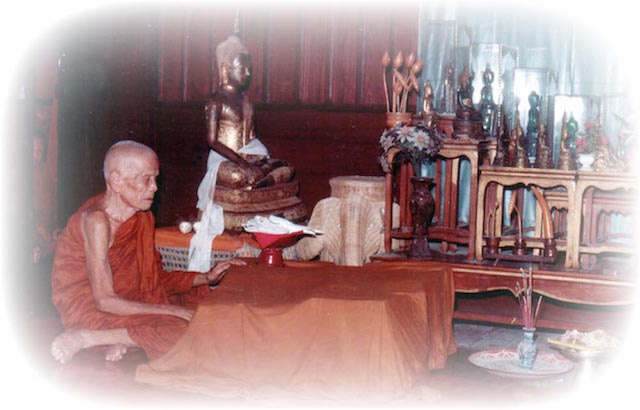
After his full Ordination, Luang Phu Ban spent many years at Wat Chai Mongkol before traveling to Tak Province and continuing his Tudong journey through Lampun and Lampang Provinces, seeking solitude and experience. During this time, he met Luang Por Fa Yuean, who was heading to pay homage to the Relic Stupa in Tagong, Burma.
Luang Phu Ban requested to accompany Luang Por Fa on his journey back through Tak and Mae Sod Provinces and into Burma via the forests. After paying reverence at the Tagong Relic Stupa, Luang Phu Ban returned to Tak Province before the rainy season to find a temple where he could stay during the Khao Pansa retreat (a period when monks must not wander).
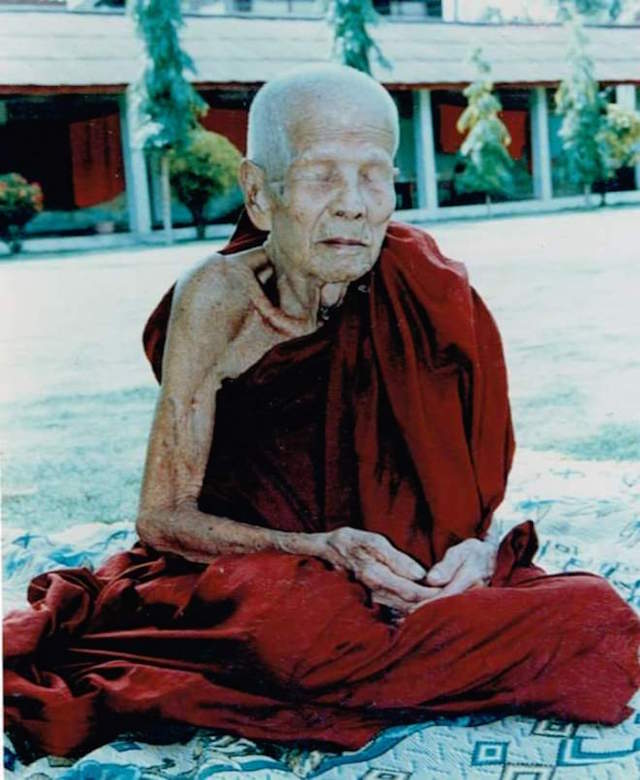
Luang Phu chose to stay at Wat Praw during the retreat, gaining experience and further developing his practices. Following the retreat, he moved to Wat Dong Yang in Ban Tak, where he stayed for a year. Subsequently, he went to Wat Pha Yang Ging in Sam Ngao, Tak Province, to continue his studies in Wicha and austerity practices. When the Abbot of Wat Pha Yang Ging passed away, the local Sangha and devotees requested Luang Phu to temporarily assume the role of Abbot until a successor was found. After a new Abbot was chosen, Luang Phu Ban was asked to move to Wat Hua Ban, now a deserted temple.

Luang Phu Ban stayed at Wat Hua Ban for two years before contracting Malaria and falling seriously ill. Kroo Ba Inta from Wat Pha Yang took him to Wat Mae Ya for treatment and recovery.
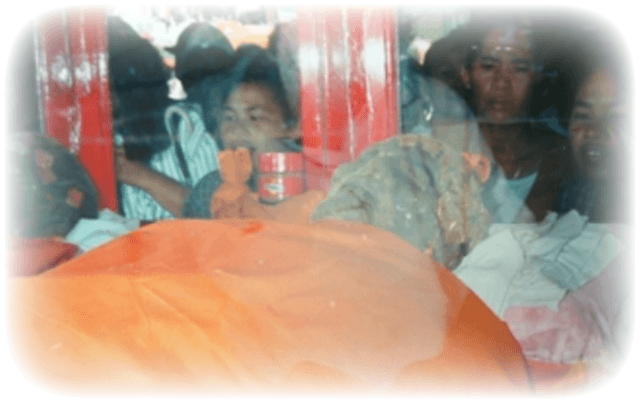
After recovering from Malaria, Luang Phu Ban remained at Wat Mae Ya for many years as one of the temple monks. Upon the death of Wat Mae Ya’s Abbot, Luang Phu Ban was elected as the new Abbot and stayed there for the remainder of his life, passing away at the age of 102 after 80 years as a Buddhist monk, with 64 of those years spent at Wat Mae Ya. His remains are preserved inside a glass coffin for devotees to visit and pray to.
